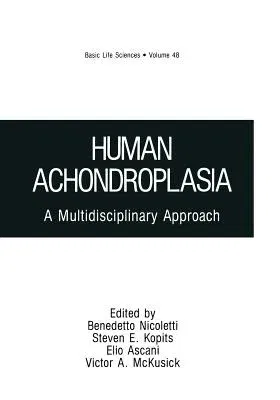1. In the lumbar spinal canal of the achondroplast there is decreased
cross-sectional area. In addition the intervertebral foramina are
narrow. These changes result in reduced area for the dural sac and
exiting spinal nerves. 2. There is associated thoracolumbar kyphosis and
a lumbosacral hyperlordosis. These sagittal plane changes result in
increased tension on the dural sac and nerves. 3. With aging there is
disc degeneration with disc space narrowing and osteophyte formation. In
addition facet hypertrophy with osteophyte formation are common. These
degenerative changes further reduce the size of an already compromised
spinal canal and intervertebral foramina. The above understanding of the
normal spinal and anatomy in the achondroplast, and the added effects of
aging allow the surgeon to plan a logical treatment regimen for
neurological problems in the achondroplast. Fig. 6. Cross-section at the
di sc level of an achondroplast (A) and an age matched non-achondroplast
(B). The cross-sectional area of the spinal canal is reduced in the
achondroplast, with a reduction in the antero- posterior canal (C vs. C
1 ). There is facet hyper- trophy extending into the nerve root canal
and into the spinal canal lateral recess (B vs. B 1 ). In ad- dition the
nerve root canal is markedly reduced in-the achondroplast (D vs. D1 ).
(Reprinted with permis- sion, as of Fig. 5). 225 REFERENCES 1. R. J.
Eulert, Scoliosis and kyphosis in dwarfing conditions, Arch.
Orthop.Traum. Surg.102:45 (1983).


